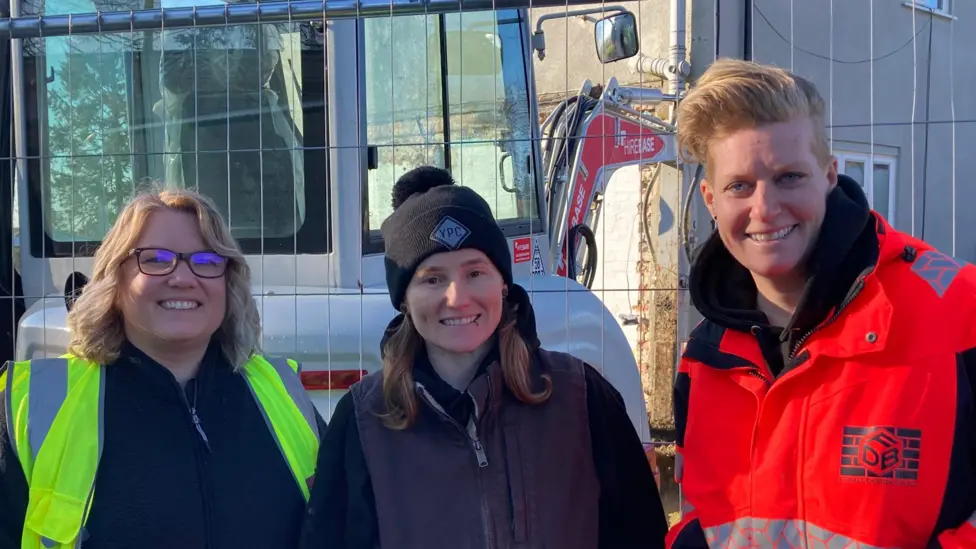
The Rise of Women in the UK Construction Industry: Empowering the Future
The UK construction industry has long been associated with male-dominated workforces, but in recent years, there has been a noticeable shift. Women are increasingly making their mark, both in traditional roles and more skilled positions, as they contribute to the sector’s growth and innovation. This positive change is not only diversifying the industry but also addressing critical skills shortages in construction. But what’s driving this shift, and how are young women in particular shaping the future of construction?
Breaking Barriers: Women in the Workforce
Women currently make up around 15.8% of the UK’s construction workforce, a figure that has steadily increased over the last decade. This marks a 3.2% growth since the pre-pandemic years, with over 340,000 women now working across various sectors in construction (UK Construction Week). While the industry still faces significant gender disparities, particularly in executive and manual roles, this upward trend indicates positive change. In manual roles, only about 1% of the workforce is female, and women occupy only 7% of executive positions.
This underrepresentation, however, presents a critical opportunity for the industry. By empowering women in construction, we are not only tapping into a vast pool of untapped talent but also ensuring the industry is better equipped to meet the demands of a growing economy.
Young Women Choosing Construction Apprenticeships
One of the most exciting trends is the increasing number of young women choosing construction-related apprenticeships. In 2022-2023, approximately 10% of the 24,530 people beginning construction apprenticeships were young women—a significant increase of 2% from the previous year. In fact, women starting apprenticeships in construction rose from 1,450 in 2018-2019 to 2,420 in 2023-2024.
This rise in female apprenticeships is an exciting development, but challenges remain. Women still face barriers to entering certain trades or progressing to senior roles. For example, a recent UCAS report revealed that while 50% of young people applying for engineering courses are interested in apprenticeships, only a small proportion of these applicants—roughly 2,585—are female. However, despite these challenges, the momentum is undoubtedly shifting.
Initiatives Driving Change
The construction industry is responding to these challenges by implementing initiatives designed to attract, retain, and support women. The WISE Campaign (Women into Science and Engineering) has been one of the leading forces in encouraging women to pursue careers in male-dominated industries such as construction. Founded in 1984, the campaign works tirelessly to provide guidance and mentorship to women in STEM fields.
In addition, organisations like the Wates Group are pushing for greater diversity. In celebration of their 125th anniversary, Wates has set a goal to recruit 125 women into construction roles by 2025, exemplifying their commitment to promoting gender inclusivity in the sector.
Moreover, companies like Cyfle Building Skills are seeing the long-term benefits of encouraging women to take part in construction apprenticeships, with women increasingly enrolling in trade courses. Similarly, events hosted by Adra focus on breaking down gender barriers and inspiring young women to consider careers in the construction industry.
Government Support and Industry Growth
The UK government has also recognised the importance of increasing the number of construction professionals, particularly with major housing projects underway. Plans to train 10,000 new apprentices annually include reducing bureaucratic barriers, making it easier for young people—especially women—to enter the field. A £140 million investment is aimed at training 5,300 new bricklayers to help meet the country's housing demands, offering further opportunities for aspiring women in the sector.
These efforts will ensure that the construction industry has a more diverse workforce, ultimately enhancing productivity and innovation. By prioritising apprenticeships and providing pathways for women to thrive in construction, we are building not just homes, but a more inclusive future.
Conclusion: A Brighter Future for Women in Construction
The rise of women in the UK construction industry is not just a trend but a powerful movement that’s reshaping the sector. As more young women choose to pursue apprenticeships, the industry stands to benefit from a broader talent pool, diverse perspectives, and a more inclusive workplace. With the continued support of educational programmes, government initiatives, and forward-thinking companies, this positive transformation will only accelerate. The future of construction is indeed female—and it’s looking brighter than ever.
Sources: The Access Group, PBC Today, UCAS, WISE Campaign, Wates, Cyfle Building Skills, The Sun
